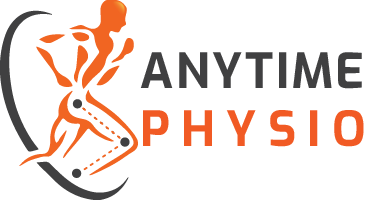PHYSIOTHERAPY FOR KNEE PAIN
Learn how we treat knee pain
at Anytime Physio
Physiotherapy for Knee Pain
AN INTRODUCTION TO THE KNEE
The knee is the largest joint in the body. It is made up of the femur (thigh bone), the tibia (shin bone), the patella (knee cap), the supporting ligaments and interarticular cartilage. As one of the most complex joints, there are many potential causes of knee pain.
HOW DOES A PHYSIOTHERAPIST TREAT KNEE PAIN?
Anytime Physio in Brisbane offers experienced knee pain assessment and treatment. Physiotherapy for knee pain is available at our Newstead, New Farm and Clayfield clinics. Physio treatment for knee pain will involve assessing movement of your knee, identifying positions and activities that cause pain and addressing muscle pain and joint stiffness through hands-on techniques and exercises for your knee. Treatment varies depending on the presenting condition. Your physiotherapist will need to thoroughly assess your knee to ensure the correct diagnosis is made.
COMMON KNEE CONDITIONS
Below is a list of the most common injuries involving the knee. Please remember that this list is not exhaustive and that, in many cases, pain does not have to involve any one particular structure. Click on each condition to read more about assessment and treatment of that condition (more coming soon). Also, you might find our article on the anatomy of the knee helpful (coming soon).
- Fractures
- Dislocations
- Ligament sprains, strains and tears
- Anterior Cruciate Ligament (ACL) injuries
- Posterior Cruciate Ligament (PCL) injuries
- Medial Collateral Ligament (MCL) injuries
- Lateral Collateral Ligament (LCL) injuries
- Meniscal sprains, strains and tears
- Muscle and tendon tears
- Tendinopathy – also called tendinosis, previously incorrectly called “tendinitis” (find out why this terminology is incorrect here)
- Fat pad irritation
- Bursitis
- Baker’s cyst
- Patellofemoral joint pain
- Iliotibial band pain
- Chondromalacia patellae
- Osteoarthritis
- Rheumatoid arthritis
- Gout and Pseudogout
Remember that this list is not exhaustive. There are many reasons why knees can hurt (and some of them don’t even involve the knee.
ACUTE KNEE INJURY MANAGEMENT
If you’ve just injured your knee, here are a few tips to get you on the road to recovery. Please remember that this advice is general and does not constitute medical advice.
Rest From Aggravating Activities
Identify the positions and movements that aggravate your knee pain. Pain is a protective mechanism and is used to help you avoid further irritation of injured tissues that need time to heal. In the acute recovery phase, it is important to give the shoulder a break from loading and painful movements.
Remain Physically Active after a Lower Back Pain Injury
Consider the movement or activity that likely caused your episode of low back pain. Were you bent forwards or backwards? Were you twisting to one side? Pain is a protective mechanism. It acts to stop you from further irritating structures that need time to heal. In the early stages, it is important to give these structures a break from loading and movement.
Apply Ice for Knee Pain Relief
Ice should be applied in the early stages of recovery. 20 minutes on every 2 hours is a great way to reduce swelling in the knee in the first 48 to 72 hours after an injury. After this time, heat can be applied to help relax the muscles around the knee and to increase circulation in the area to increase metabolic rate for healing.
Book An Appointment with a Physiotherapist
Our Physiotherapists are experts in assessing and treating knee pain and injuries. We see them everyday and know each step of successful rehabilitation. Physiotherapy for knee pain involves identifying potential structures involved in the injury and the factors that led to the injury in the first place and designing a recovery plan suited to your specific condition. Treatment options include hands-on manual therapy, massage, exercises to improve mobility and motor control of the knee and the legs in general.
Need Help With Your Knee Pain?
Book an appointment online with one of our expert physiotherapists.
